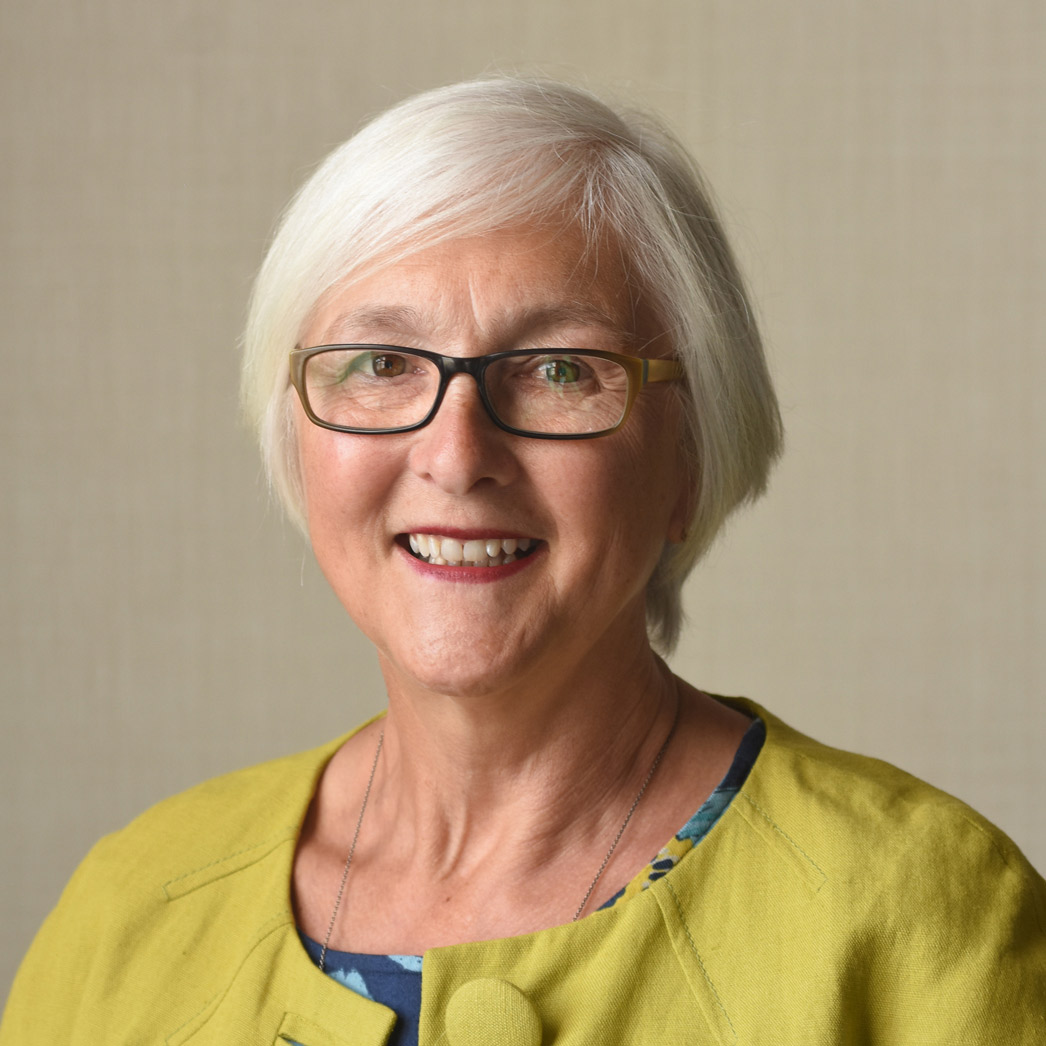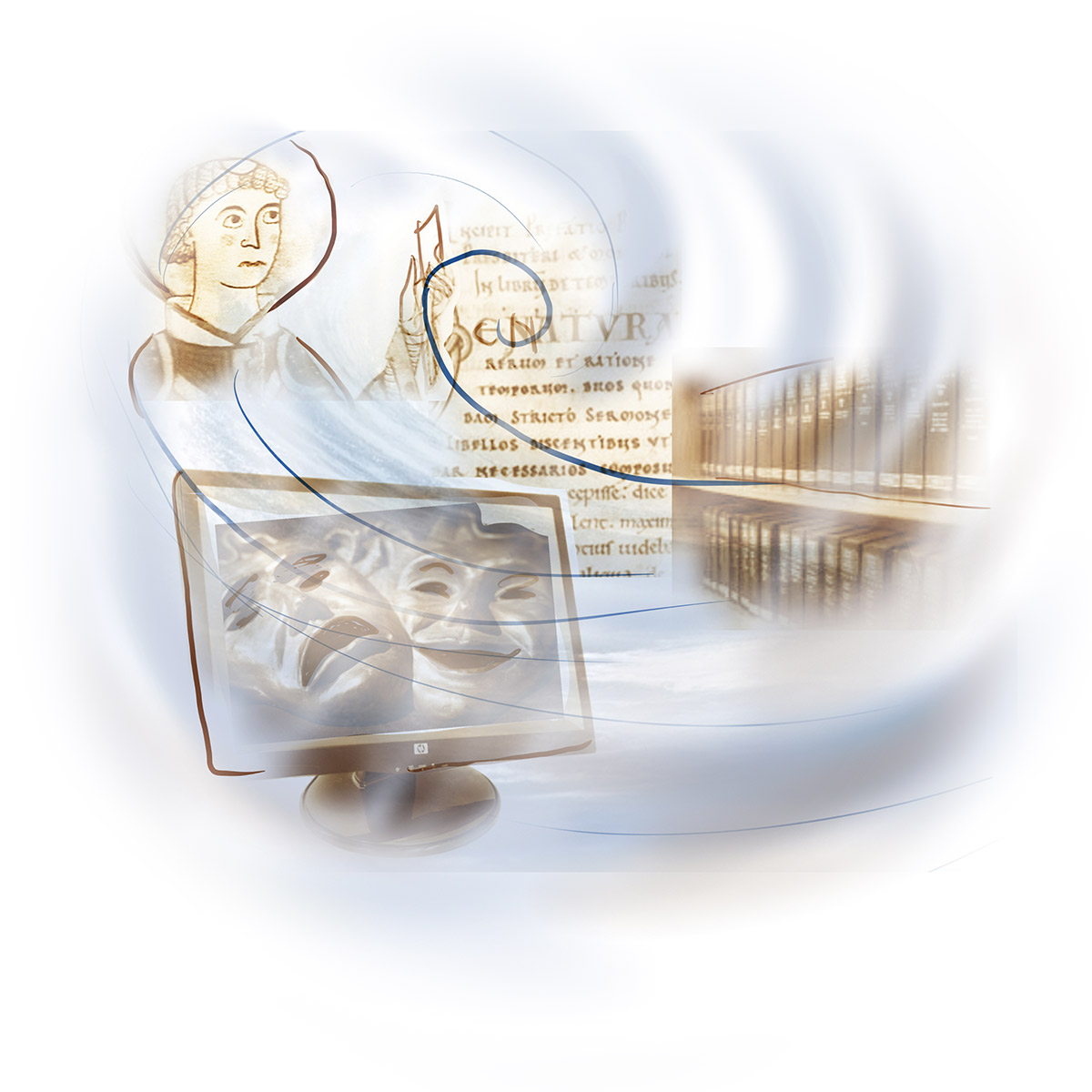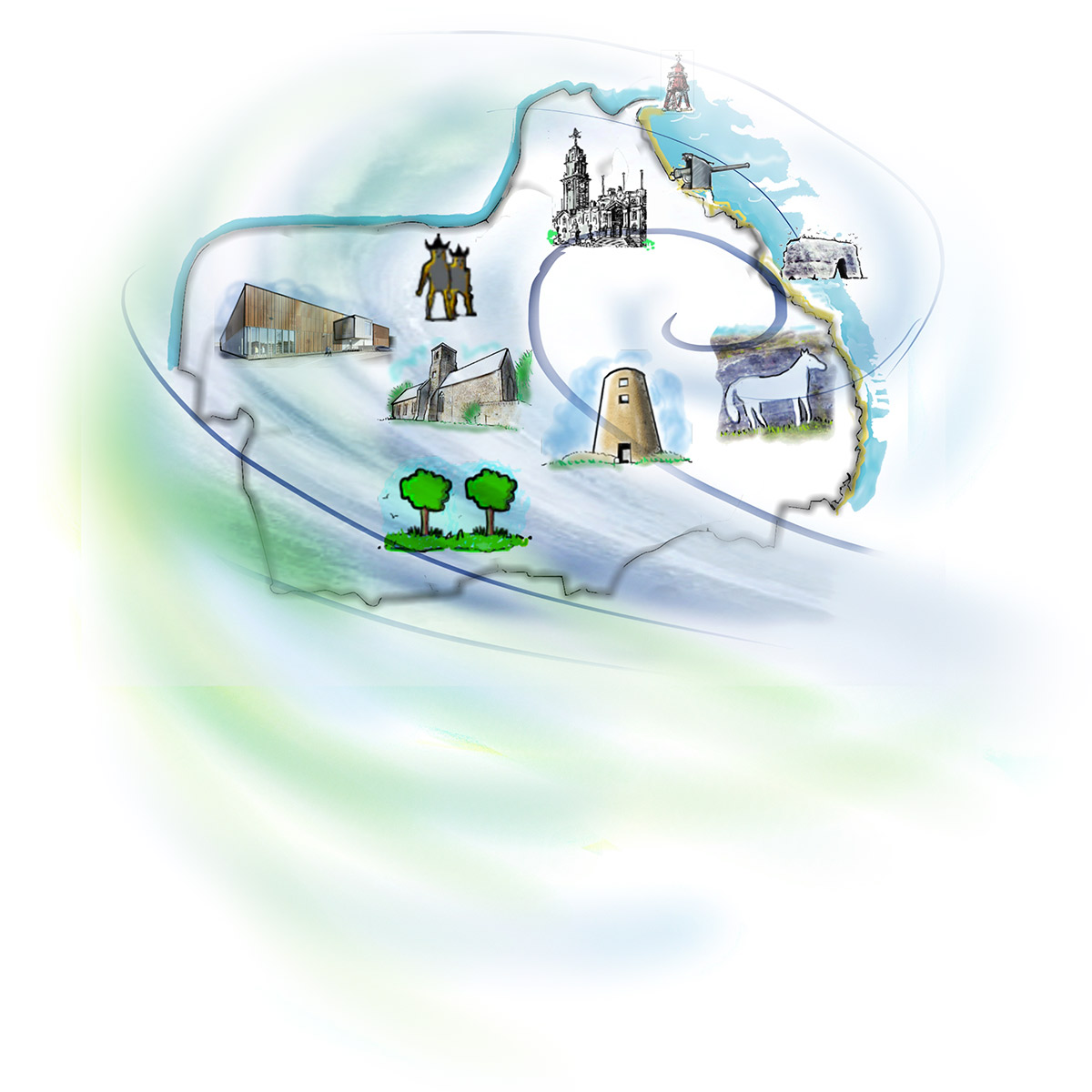Making Waves South Tyneside Cultural Strategy 2022-27
Published March 2022 An accessible document from southtyneside.gov.uk

Foreword
South Tyneside has a rich cultural heritage which we want to build upon to create an equally strong and vibrant future. That is why this document has been developed.
‘Making Waves’ is a Cultural Strategy for South Tyneside. It has been produced following public consultation and with extensive help from partner organisations.
The strategy is designed to excite, energise and grow the cultural community. It offers a collective voice for the sector and provides a platform to nurture and showcase local skills and talent.
Excitingly, it will increase opportunities for new cultural experiences over the next 5 years and beyond.
I hope the aims and ambitions outlined inspire you to get involved, try something new and get creative.

Cultural Partnership Group Member
Vision statement
South Tyneside will be a place with a dynamic arts and cultural offer that increases opportunities and participation, creating a positive impact on the lives of people across the Borough, contributing to making South Tyneside an outstanding place to live, invest and enjoy.
Introduction
Why have a Cultural Strategy?
This Cultural Strategy is designed to energise and excite, galvanising people and increasing opportunity to make South Tyneside a vibrant, healthy, happy place to be.
There are ambitious plans developing for improving the quality of life for all who live, work and visit South Tyneside. Our cultural life is at the core of creating the conditions that improve the wellbeing and prosperity of the Borough.
The Cultural Strategy is a shared plan for long term development. It will help nurture and grow our creative and cultural sector and prioritise how future resources are invested across South Tyneside. Arts, Creativity and Culture are recognised as key enablers, helping people into employment, encouraging innovation, supporting better health and wellbeing and raising aspiration.
This strategy is intended to set out a clear ambition for South Tyneside over the next five years and inform the work beyond.
The approach will evolve through monitoring and evaluation of the progress and achievements. This strategy complements developmental plans of key cultural organisations in South Tyneside as well as Council strategies relating to Health & Wellbeing, Adult Social Care, Place-Making, Economic Development (Economic Recovery Plan), Children’s Services and Climate Change (Sustainable South Tyneside) so we can work together to make a significant positive impact.
A delivery plan will be developed to support the realisation of this strategy, focusing on priorities and realistic actions to achieve ambitions.

Developing this strategy
This Cultural Strategy is informed by a borough wide consultation that took place in 2021 facilitated by Paddy McNulty Associates.
Those participating in the consultation included residents, the voluntary and community sector, the cultural and creative sector, elected members and other stakeholders.
Due to global circumstances, the consultation took place through a series of digitally delivered focus groups and interviews and further engagement took place via an online questionnaire. Over 500 people shared their views through the broad themes that were explored during the consultation:
- Cultural strengths of South Tyneside
- Challenges in cultural provision in the Borough
- Cultures contribution to South Tyneside and its people
- Impact of Covid-19 and future support for culture
- The best things about South Tyneside
A newly established Cultural Partnership Group (CPG) met in Autumn 2021 and explored key themes for future development opportunities and indicative strategic actions that could underpin and support cultural development across the Borough.
The Partnership developed this Cultural Strategy and agreed its collective goals. The Cultural Partnership is a driver for arts and culture and by focusing energies and resources via this shared Cultural Strategy and robust delivery plan, can be more effective. The creativity, skills and experience of our cultural sector can support wider priorities for South Tyneside while also inspiring and helping local people to live healthier and more fulfilling lives.
The Cultural Partnership Group are:
- Arts Council England Creative People and Places Project (ACE CPP) The Cultural Spring
- Citizens Assembly South Tyneside (CAST)
- Creative Seed CIC
- Groundwork North and South Tyneside Jarrow Hall
- National Trust Souter Lighthouse
- Sangini
- South Tyneside Council Cultural Services
- South Tyneside Music Hub
- Sunderland University
- The Customs House
- Tyne Coast College
- Tyne & Wear Archives and Museums (TWAM) Arbeia, South Shields Roman Fort and South Shields Museum and Art Gallery
What do we mean by Arts and Culture?
We have taken a broad definition of arts and culture, one which not only covers heritage, museums, libraries and a wide range of visual, performing and literary art forms, but also our natural environment, architecture and design. Culture is what defines us – it is woven through everyone’s lives. It may be by choice or unacknowledged; passively or with enthusiasm; through tradition or new experience.....the ways in which culture affects people’s lives and the environments they inhabit is multi-layered, diverse and complex.
Arts Council England describe Culture as a term that includes all those areas of activity associated with the artforms and organisations in which Arts Council England invests: collections, combined arts, dance, libraries, literature, museums, music, theatre and the visual arts. ACE define Creativity as the process through which people apply their knowledge, skill and intuition to imagine, conceive, express or make something that wasn’t there before and specifically as the process of making, producing or participating in ‘culture’.1

Arts and culture
Locally
Culture plays an important role in the area’s unique identity and is woven through our lives. South Tyneside is rich with arts and cultural venues, organisations and individuals, a significant history and heritage that provides a sense of belonging as well as a pride of place. The area boasts beautiful natural assets including the coastline, parks and green open spaces as well as a vibrant programme of annual festivals and events throughout the year. South Tyneside has a rich and diverse community that is to be celebrated through its activity and innovative programming to reflect the place, its people and increase engagement. These valuable arts and cultural assets provide opportunities that help us to better understand ourselves and the world around us past, present, and future.
Arts and Culture bring many benefits. They can bring intrinsic pleasure and value through the act of experiencing, participating in, or creating work. They can bring many social benefits that support strong connected communities that are resilient with improved wellbeing, are happier and more prosperous. Arts and Culture adds to the economic value of the area, supporting economic growth and job creation. (See Appendix A for more information)
Regionally
The regional North East Cultural Partnership (NECP), involving a range of organisations including South Tyneside Council, has developed the North East Case for Culture strategic plan, which sets out a framework for development, growth and investment for the region’s arts and heritage sectors, (2015-2030). The five areas of ‘aspiration’ offer touch points for cultural development in South Tyneside:
- Participation and reach - spreading the benefits of arts and heritage further to make sure everyone benefits
- Children and young people – ensuring we continue to innovate and broaden access to culture for children and young people, for all the benefits this brings to future generations
- Talent and progression – ensuring we attract and retain the very best cultural and creative talent, and provide routes for career progression to grow a more skilled and diverse workforce
- Economic value – harnessing our potential to support economic growth and job creation, and attract more visitors to our region
- Creating a vibrant and distinctive region with an excellent quality of life – the right conditions for innovation and inward investment

Nationally
In Autumn 2021 South Tyneside was designated one of Arts Council England’s (ACE) 54 ‘Priority Places’ which will see further support and investment for Arts and Culture across South Tyneside.
Let’s Create, Arts Council England’s national ten-year strategy2, underscores the value of creative potential, and how it allows us to ’reflect and comment on society, to better understand our own lives and those of others, and to occupy a shared space in which we can debate, present alternative views, and discover new ways of expressing our anxieties and ambitions’.
The South Tyneside Cultural Strategy reflects the priorities of ACE Let’s Create which involve:
Creative people
Everyone can be creative, and each of us has the potential to develop our creativity further. Taking part in creative acts such as singing, photography or writing delights and fulfil us, and helps us to think, experiment, and better understand the world.
Cultural communities
Culture and the experiences it offers can have a deep and lasting effect on places and the people who live in them. Investment in cultural activities and in arts organisations, museums and libraries helps improve lives, regenerate neighbourhoods, support local economies, attract visitors and bring people together.
A creative and cultural country
To achieve the first two outcomes, we need a professional cultural sector that generates new ideas, works easily and effectively with others, and is adept at developing diverse talent from every community.
It should aspire to be world-leading – in the way it makes art, in the imagination and expertise with which it makes exciting use of collections and develops libraries, and in the culture it creates and shares.
In the work we do we will embed ACE Investment Principles:
- Ambition and quality
- Dynamism
- Environmental responsibility
- Inclusivity and relevance
Our place
The Borough has pockets of high deprivation with more than half of its wards in the UK’s 30% most deprived areas, with a high proportion of children living in poverty, and four wards classed as ‘left-behind’ by the All-Party Parliamentary Group on Left-Behind Neighbourhoods (2020). Higher unemployment and economic inactivity than regional and national levels have been exacerbated by the pandemic, particularly among young people where NEET (not in education, employment or training) rates are double the national average, and fewer young people are progressing into Higher Education, compared to regional and national levels.
Visitors enjoy South Tyneside with 7.1 million people visiting in 2019, an increase of 8% on the previous year, with a value to the local economy £362.68 million. 94% of all visits to South Tyneside are day visits and accounts for 77% of expenditure (2019). However around 2,600 jobs have been lost in the retail, visitor and hospitality sectors since March 2021, so significant recovery and future growth is vital for the area’s prosperity.

There are drivers and impetus for culture outlined at regional and national levels that have significant relevance for South Tyneside, an area with some challenges but also many strengths.
The Borough’s creative and cultural sector is growing, along with a recognition of the importance of culture to local economic recovery. There are ambitions for South Tyneside to be a place where cultural inclusion and engagement are not limited by social or economic inequalities, and a place which reflects diversity of ideas, skills and aspirations. The creative arts sector employs over 500 people, contributing nearly £18m to the local economy annually, and the wider creative sector – tourism, leisure and hospitality – employs over 5,300 people and contributes over £100m every year to the local economy.
Aligned with growth in businesses between 2019 and 2020 faster than regional and national averages, there are strengths in industry-leading companies who export across the globe, and major economic opportunities, such as the world’s biggest offshore windfarm under development at Dogger Bank, served by facilities at the major Port of Tyne.
The Borough also has high performing training and educational agencies and institutions, and between 2017 and 2019 there was a 13% rise in the proportion of higher-level skilled jobs across the Borough, offering optimism for the future.
South Tyneside Council are currently working with Tyne Coast College to relocate their South Tyneside campus into the heart of South Shields Town Centre. This would bring considerable additional footfall to the town centre with students utilising existing facilities within the town, including The Word and The Customs House supporting the performing arts curriculum. The Cultural Partnership Group are committed to the South Tyneside Pledge to support local business and economy.
South Tyneside Council are champions for a carbon neutral future for the Borough. This includes using advocacy to influence actions that promote carbon reductions, across all South Tyneside’s communities, to make South Tyneside carbon neutral by 2030. Climate change is everyone’s responsibility and culture has an important role to play in achieving real improvements. Environmental responsibility will be embedded into everything we hope to do and achieve as part of this strategy.
This Cultural Strategy and Cultural Partnership Group provide significant opportunities to ensure that culture is not only a beacon for the Borough but is also a pivot, a lever and an essential cog in local and regional plans, ensuring that culture supports South Tyneside to be a place for people to:
- Live well
- Invest and thrive
- Visit and enjoy
Live well (people)
There is evidence3 to show there are positive links between cultural participation and improved social skills, with communities becoming closer, feeling safer and being stronger. In addition, people who take part in the arts are 38% more likely to report good health. Cultural participation has also been found to have a significant positive effect on civic pride among children and young people with research indicating that children who engage with cultural organisations are 58% more likely to volunteer for cultural institutions in adulthood, and 78% more likely to donate to those organisations as they grow up.4
The Durham Commission 2019, highlights evidence from psychology, education and neuroscience that shows that children’s educational experiences in their early years are crucial in underpinning the development of skills that will last for a lifetime. Positive creative interaction with adults, whether parents and carers or early years workers, will give children a strong foundation for their formal education. The breadth of opportunity for children’s development during the pandemic has been challenging, we recognise the role that arts, culture and creativity can play in this development.
There is also evidence5 that participation in structured arts activities can increase cognitive abilities by 17%; that learning through arts and culture can improve attainment in Maths and English and learning more broadly, supporting skills and behaviour that lead children to do better in school. There is a range of data showing a clear relationship between culture, educational attainment and an increase in the likelihood of a young person going on to further and higher education.
Although the cultural and creative industries are often perceived to be difficult to access for many, the pandemic has had an impact on the way audiences engage and their expectations. Creatives and cultural organisations have opportunities to re-consider different forms of engagement with communities to grow their creativity, and to develop current and future audiences.
‘Arts can help keep us be well, aid recovery and support longer lives better lived’, reported the All-Party Parliamentary Group on Arts, Health and Wellbeing Inquiry.6 The report evidences the role arts can play to help meet major challenges facing health and social care: ageing, long term conditions, loneliness and mental health.
There is evidence that engagement with arts and culture can help save money in health and social care services, as arts interventions have been found to alleviate anxiety, depression and stress while increasing resilience and wellbeing. The All-Party Group recognised that the arts are a vital part of the public health landscape and therefore an essential responsibility of local authorities and area for investment. The pandemic has highlighted how arts and creativity can alleviate pressures on mental health. ‘Everyone needs something to pass the time’ Mabel Bird, 102, South Tyneside. We want to build on this interest through the development of the arts and cultural offer across South Tyneside.
Ambition
Our aim is to:
Enable all children and young people to have the best start in life through access to high quality arts and culture
We will achieve this by:
- Developing bright futures for children through creative opportunities which support and strengthen positive experiences in their early years in community and educational settings
- Developing the Local Cultural Educational Partnership (LCEP) to support increased access and engagement in arts and culture for our children and young people across formal and informal educational settings. Through innovative cross sector working, creating the conditions for young people to develop creative skills and attributes for lifelong learning
- Supporting young people to achieve creative ambitions to be drivers of cultural production, providing opportunities and resources to enable young people to be creators, devisers, producers and leaders of arts and culture
Improve community connectivity
We will achieve this by:
- Promoting an inclusive and diverse cultural offer that reflects a wide range of experiences across the Borough
- Developing creative neighbourhoods, making arts and culture relevant to communities. Encouraging innovative, fresh, creative approaches by better understanding need and building on existing interests. Partnerships will be supported to animate places, build on existing activity, and create new traditions borough wide; ‘a pivot to people and purpose’7
- Developing digital approaches that enable individuals and communities to come together, as a part of the way we work, to develop new ways to support access and inclusion
- Creating a collective volunteer network that supports creative activity across the Borough. Developing a cultural network which can harness and mobilise the skills and advocacy of volunteers
- Supporting access to and awareness of arts and cultural opportunities to increase participation and engagement
Create resilient communities
We will achieve this by:
- Developing effective creative social prescribing interventions to support informed choices and decisions that lead to healthy choices, behaviours and lifestyles
- Sharing and celebrating the impact arts and culture can have on positive health and wellbeing through active engagement in research, gathering evidence and sharing good practice
Invest and thrive (economy)
Research has found that the arts and culture of a place is a significant factor in people’s decision to move to, or remain in an area, rated as ‘an equal priority to schools’8. With regards to businesses attracting and retaining staff, research indicates that the arts and cultural offer, ‘act as a pull factor, equally important to someone employed in a high-skilled job as someone seeking employment in a lower skilled role.’9 In order to support the ongoing regeneration and improved economy of South Tyneside, it is vital to invest in the skills and infrastructure of the creative and cultural industries. Despite recent challenges, organisations in the Borough have been successful in securing Cultural Recovery Funding to support their future plans to recover, strengthen and provide a resilient, robust sector workforce, it is important investment for the strategy continues to support this resilience and growth.
However, there are currently challenges in access to creative education for all children and young people, despite the acknowledged importance of creative industries to the UK’s industrial strategy, and the value this can bring.
Enabling creative and enterprising approaches can support creatives, innovators, artists and entrepreneurs to develop business and innovative activity that contributes to our local economy and the development of the area. In the North East area for every £1 created by the creative industries, a further £2.50 was generated elsewhere in the local economy.10
In total there are three million people working in the creative economy across the UK, with a third working in creative occupations outside of the sector. This underlines the transferability of creative skills, and their role in supporting employability. 58% of employers expect creativity skills to grow in importance in the next three years11.
Creativity skills are not just needed in the creative industries, the engineering industry needs creative problem solvers, the tourism industry needs imaginative marketing and services...12
There are increasing concerns about where and how creative education is being prioritised. Ensuring a strong emphasis for arts and culture in both formal and informal education can help to counterbalance an emphasis on educational opportunities which focus increasingly on strong economic returns, without recognising the wider value of creativity and culture.
Some skills shortages identified in research13 suggested a cause may include changes in the education system. It suggested a lack of educational opportunities to develop creative skills at secondary or tertiary level had led directly to a skills shortage. In addition, a more complex set of factors included a lack of effective careers education, information, advice and guidance in schools resulting in a lack of awareness of the wider opportunities within the creative and cultural sector. Whilst creative skills are growing in demand, the supply of talent to the sector and beyond, is not keeping pace and risks shortages in a skilled workforce.
Ambition
Our aim is to:
Champion the universal role of Arts and Culture across the Borough
We will achieve this by:
- Developing a collective voice and advocacy body for arts and culture in the Borough. Creating a strong collective network, support structure and knowledge exchange to provide a unified strong sector voice to influence policy and decisions
- Supporting local priorities by strengthening cross sector networks ensuring the arts and cultural sector is actively collaborating, responding to, and contributing to social, economic and environmental priorities through Economic Development and Regeneration, Public Health, Adult Social Care, and Children’s Services
- Harnessing, maximising and sharing data, insight and intelligence to strengthen the understanding of the value of culture, to demonstrate impacts for investors and funders, and to support robust, evidence-based planning
Strengthen the current Arts and Cultural infrastructure within the Borough
We will achieve this by:
- Driving the active development of emerging and existing organisations to ensure the sector is robust, has creative and organisational resilience, and has meaning. Ensuring that organisations are ready for new opportunities with abilities to respond to need
- Exploring new investment streams for culture to ensure the cultural sector are maximising funding opportunities
- Inspiring and developing cultural leadership opportunities, and creating platforms for new voices and ideas that allows for a strong, well-networked and resilient workforce
- Maximising shared knowledge, skills and facilities in the cultural sector to enable growth and new opportunities to flourish
- Supporting organisational change to ensure the development of a diverse creative and cultural workforce which is relevant, skilled and confident
Nurture opportunities to grow aspiration, creative skills and talent in the Creative and Cultural sector
We will achieve this by:
- Offering sector specific training, development and business support for creatives that is relevant and can enable innovation and growth
- Ensuring access to/signposting of current and high-quality information about skills and continued professional development opportunities for creative practice
- Encouraging and supporting cultural engagement and creative learning for young people through local opportunities which develop skills to support employability, innovation, creativity and inclusion
Visit and enjoy (place)
Cultural organisations have a key role in shaping resilient places through the development of distinctive identities, valuing assets which focus on local cultural expression and heritage, and by contributing to the vibrancy and attractiveness of places.
There is the acknowledgement of the social and economic value of the cultural sector, and its ability to deliver growth and drive regeneration14, with impacts ranging from growth in tourism, creative and cultural sectors, to enhancing individual skills, knowledge and confidence, to strengthening community pride and place image. Cultural and Heritage tourism is very important to the national economy, accounting for 2% of GDP, contributing £26 billion per year.15 Examples include regional and national programmes such as the Great Exhibition of the North, Hull’s arts and cultural offer which significantly improved after the City of Culture 2017, and Portsmouth’s Historic Dockyard where an increase in investment in cultural facilities has resulted in two million annual visitors, with £51 million of annual visitor spending.
Numerous examples around the country demonstrate how arts and culture play a key role in revitalising town centres and high streets, offering different reasons for visitors to return to retail areas where footfall has been declining, even before the unprecedented pressures of the pandemic. Culture offers a wealth of opportunities to be enthralled by new experiences and by familiar ones, which can resonate, alongside exploring places and venues which may not have a perceived connection with arts and culture. A recent study argues that high streets, ‘define the character and identity of our towns and neighbourhoods. They are spaces that should bring us together and engender civic pride'16 by deepening understanding of localities. A recent report from the Arts Council indicated that 69% of people think culture on the high street makes their local area a better place to live.17
These views are also supported by a study of Business Improvement Districts, undertaken by British BIDS in 2018, which points to evidence of the role of culture as an ‘innovation tool’ contributing to strong place-shaping, attracting visitors and increasing footfall in town centres. Research found that a rich and diverse arts and cultural offer supports local businesses through profiling a positive identity and reputation of a place, and, in some cases, changing negative perceptions.
The intention to develop a vibrant Cultural Quarter for South Tyneside aligns with successful examples of Cultural Quarters in towns and cities across the UK and internationally, over the past couple of decades. These examples demonstrate the significant opportunities gained through strategic cultural planning which integrates cultural and economic development. This is often linked to the redevelopment or regeneration of a selected inner urban area, benefits result where mixed-use development is encouraged, the public realm is reconfigured, and areas gain new identities and purpose through rebranding.
Ambition
Our aim is to:
Maximise South Tyneside’s cultural tourism offer to enhance and connect local communities and support the economy
We will achieve this by:
- Growing audiences and visitors through cultural opportunities that encourage and support an appetite for ‘unusual and unexpected’ arts and cultural activity
- Promoting a coherent year-round offer through joint programming opportunities that encourage visitors to extend visits, collaboration between business and cultural sectors, and increase employment for creatives
- Celebrating the unique aspects of South Tyneside’s culture to strengthen local identities and distinctiveness by promoting and celebrating the place – its past, present and future
Explore new opportunities for uses, animation and interpretation of heritage buildings, civic spaces and natural assets
We will achieve this by:
- Encouraging collaborative planning and new approaches to offer opportunities for artist and community led initiatives to add value to the interpretation of spaces and heritage assets
- Improving opportunities for residents to celebrate, share and have a voice for their own heritage and culture in the places that are important to them
- Animating and enlivening public spaces through temporary installations, commissions, pop up events and activity which enhance programmes beyond arts and culture, such as food festivals
Develop and realise ambitions for South Tyneside’s Cultural Quarter
We will achieve this by:
- Developing a vibrant destination hub which revitalises a key location in South Shields, and creates a catalyst for cultural development across the Borough including greater use of community spaces borough wide and sector growth
- Supporting creative enterprise through the promotion of attractive spaces and places which offer increased connectivity for visitors and businesses
- Designing the new public realm to enhance cultural experiences and engagement for everyone
Achieving our aims
The success of the South Tyneside Culture Strategy is dependent on the arts and cultural sector partners and stakeholders working together to achieve shared goals. As a collective catalyst the Cultural Partnership Group partners will communicate broadly, and work to influence decision makers, advocates and funders through evaluation and evidence which demonstrate the value and benefits of culture to people and to the local economy. The Cultural Partnership Group will work closely with other sectors, including health, tourism, regeneration, education and business to embed arts and culture as a positive force for change and growth across the Borough.
Governance
The delivery of the Strategy will be led and managed by the Cultural Partnership Group and informed by input from a broader range of stakeholders. These will include local communities, voluntary sector groups, business sector, health sector and key Council service leads for health and wellbeing, tourism and economic development. Leadership to drive the progress of priority areas in the Strategy will be shared across the CPG. The Cultural Partnership Group will produce an annual report to be shared with stakeholders and wider partners that demonstrates the achievements of the Strategy and informs future planning and development.
Next steps
Consultation and engagement clearly indicated that the South Tyneside Arts and Cultural Strategy would be developed and delivered in partnership. Therefore, the Cultural Partnership Group will work together to co-produce a meaningful and deliverable action plan and ensure the contribution from sector specialists.
This 2022-2027 Arts and Cultural Strategy launches April 2022. Over the first 18 months we will:
- Consolidate the Cultural Partnership Group to underpin the governance of the Strategy
- Develop an action plan that is co-produced and managed by the CPG, in a digital format, to deliver the Strategy’s priorities and the CPG will agree how we will measure progress
- Host strategic joint planning and programme development discussions across the CPG to capitalise on events, programmes and activity to increase the market share in a post pandemic recovery phase
- Establish a brand and identity for the CPG and a communication plan
- Produce an advocacy document that demonstrates the impact of arts and culture on health and wellbeing, informed by data and case studies from across the Borough, to support cross sector and interdisciplinary development by the CPG
- Be ambitious and cultivate new partnerships through a series of workshops aimed at achieving joint priorities
- Develop an Artist Enterprise Development Programme and initial ‘Make the Most of South Tyneside...’ programme, supporting artists and creatives to commercialise creativity and access relevant training and development activity
- Develop the LCEP and Partnership Investment Programme to support the development of best practice between arts/culture and education sectors to support children and young peoples’ creative learning
- Expand arts and cultural community engagement in neighbourhoods through extended South Tyneside Festival activity

Measuring progress and achievements
As the Strategy’s action plan develops partners and associate organisations will collectively agree the most effective ways to capture and analyse data, and evaluate insight and impacts, (both quantitative and qualitative), and establish realistic targets.
Measures might include:
- Increased participation and depth of engagement in arts and cultural programmes
- Wider access and inclusion to arts and cultural assets and activities
- Increased investment in South Tyneside’s creative sector
- The number and scope of collaborative targeted interventions
- Increased media coverage, marketing and publicity
- Increased visitor numbers and satisfaction levels
- Increased cultural components in successful regeneration and development funding bids
Appendix A
Where are we now in terms of Culture in South Tyneside?
South Tyneside has much to celebrate
South Tyneside has a wealth of natural cultural assets from the award-winning coastline, restored Victorian parks to abundant green spaces. Public art across the Borough highlights a sense of place and makes it an attractive place to be.
The National Lottery Heritage Fund ‘Explore Seascapes’ Programme supports ongoing work to showcase and engage communities with the coastal and marine heritage and environmental concerns in the North of England and has allowed an exciting £5 million North East coastal project benefiting South Tyneside as part of the Tyne to Tees area.
Festivals, parades, and events add value to these outdoor spaces and attract volumes of residents and visitors each year. The South Tyneside Festival is a popular series of annual summer events and includes free live music, family activity and entertainment alongside a creative carnival parade. Continued investment has acted as a catalyst to encourage private sector growth in both physical regeneration and events.
The Word, The National Centre for the Written Word, is an award-winning library venue opened in 2016, located in South Shields, and is part of the South Shields 365 project which has invested £100m in the town. The Word has attracted over 1 million visitors to the space as part of a borough wide Library Service offer, developing audience engagement through its extensive library resource, creative programme, exhibition space and annual Write Festival. This work is part of the valuable library service offer across South Tyneside including online, home reader services and community led libraries.
The Customs House offers high quality arts and entertainment for all, serving the residents of South Tyneside and beyond with a varied programme of live performance, cinema, visual arts and projects for adults, families, children and young people. The Customs House is an Arts Council England National Portfolio Organisation (NPO) with facilities located within the conservation area of Mill Dam, South Shields. Learning and participation is at the heart of The Customs House offer and one particular highlight of the programme is the annual youth Take Over Festival.
The partnership between The Customs House and Tyne Coast College will strengthen existing opportunities for young people, access and growth of the sector. The Customs House have played a role in nurturing the careers of some of South Tyneside’s most famous exports including Joe McElderry, Jade Thirlwall as well as Chris and Rosie Ramsey. The Customs House has exciting plans in development as part of the regeneration of the South Tyneside Cultural Quarter and Holborn redevelopment that hopes to enhance the existing building to enable greater use of space by independent creatives, increasing greater levels of cultural engagement via co-creation and providing a significant boost to the cultural economy.
South Tyneside has a rich and significant heritage
South Shields Museum and Art Gallery (TWAM which is an ACE NPO) celebrates the rich heritage of South Tyneside and the people who shaped it. The South Shields Museum building was constructed in 1860 as a home for the South Shields Literary, Mechanical and Scientific Institution. In 1873 the building became the town’s first free Public Library and Reading rooms and it opened as a museum in 1876. The museum tells the story of the Borough’s social, industrial and maritime history from 4,000 years ago to the present day through a range of displays, exhibitions and nationally significant works of art.
Jarrow Hall (Groundwork) provide an Anglo-Saxon Farm, Village and the Bede Museum which is adjacent to St Paul’s Church and Monastic Site, a working church where Venerable Bede lived and produced his writings that have changed the world we live in today. Jarrow Hall works with individuals to develop strong and resilient communities that are able to shape their own destiny by reflecting on our local heritage to create exciting plans for our future.
South Tyneside also has a strong Roman history. Arbeia South Shields Roman Fort (TWAM) is a UNESCO World Heritage Site. It is an excavated Roman military supply base which brought individuals from across the world to be based in South Tyneside, as evidenced in two of the finest tombstones from Roman Britain which are on view in the site museum. Its reconstructions of Roman buildings are justly intentionally famous. Arbeia will play a significant role in the festival for Hadrian’s Wall’s 1900th anniversary in 2022.
There is a rich maritime, manufacturing and ship building heritage in the area too. The first purpose- built lifeboat was built in the Borough in 1789, while the second oldest preserved lifeboat, The Tyne, can be seen at the Memorial in South Shields’ Ocean Road.
Souter Lighthouse opened in 1871 to safeguard seafarers. The lighthouse is a demonstration of innovation and enterprise as the first lighthouse in the world to be specifically constructed for electric illumination. The National Trust operate the lighthouse and keeper’s cottage and also manage The Leas, a two-and-a-half-mile area of cliff, foreshore and coastal grassland.
South Tyneside has an ever-growing creative community
We have many brilliant individual artists, creative practitioners, makers and innovators that make our place unique and provide vital growth, innovation and prosperity to our area. We also have a number of creative organisations based in and working across our borough.
The Cultural Spring is an award-winning Arts Council England Creative People and Places Projects (CPP). The Cultural Spring achieved charitable status in 2020. They encourage more people to take the lead in choosing, creating and taking part in brilliant art experiences in the places where they live. The Cultural Spring has been working across Sunderland and South Tyneside since 2014 supporting increased participation in arts and culture within our communities.
There are many creatives, artists and arts led organisations doing fantastic work across South Tyneside. One example is a partnership between Blue Cabin and South Tyneside Children’s Services. This places arts and creativity at the heart of meaningful relationships between children and young people with experience of the care system, developing good practice models that are shaping the nature of services across the North East. South Tyneside Music Hub, a partnership with Gateshead Music Service, are an Arts Council England funded organisation, and are another example of a service that supports our children and young people through encouraging maximum participation in music making activities. The Service works with 5–19-year-olds across the Borough to increase access to and participation in music making.
The Local Cultural Educational Partnership (LCEP) in South Tyneside provides new opportunities for access and engagement to high quality arts and culture for children and young people through programming in formal and informal education settings and through improved partnership working and creative educational practice.
Creative Seed CIC are an arts enterprise that occupy the former St Hilda’s Pit Head in South Shields. The organisation develops creative projects within the community and the facilities at St Hilda’s Pit Head play host to their wide programme of activities, events and workshops. They have successfully worked in partnership with South Tyneside Council Events Team to increase creative community participation in both the Summer and Winter Festival Parades.
There are many amazing local arts and community organisations that provide a wide range of opportunities and experiences for communities to enjoy including groups such as The Westovians, the emerging South Tyneside Art Festival (START), the regional archaeological group The Arbeia Society, Arts for Wellbeing and Sangini.
South Tyneside has a strength through its noteworthy storytelling across many art forms that illuminates, recognises, and celebrates the remarkable attributes of the people and the place. This strategy will help to amplify this.
References
- https://www.artscouncil.org.uk/lets-create/strategy-2020-2030 Return to footnote 1 text
- https://www.artscouncil.org.uk/lets-create/strategy-2020-2030 Return to footnote 2 text
- Cultural Learning Alliance, Key Research Findings: The Value of Cultural Learning, 2017 Return to footnote 3 text
- Brian Garrod and David Dowell, The Role of Childhood Participation in Cultural Activities in the Promotion of Pro-Social Behaviours in Later Life, 2020 Return to footnote 4 text
- Cultural Learning Alliance, Key Research Findings: The Value of Cultural Learning, 2017 Return to footnote 5 text
- Report ‘Creative Health: The Arts for Health and Wellbeing 2017’ Return to footnote 6 text
- Mark Robinson Tactics for the Tightrope Return to footnote 7 text
- The Value of Arts and Culture in Place-shaping (PDF) Return to footnote 8 text
- The Value of Arts and Culture in Place-shaping (PDF) Return to footnote 9 text
- The North East creative industries: unleashing the power and potential of creativity Return to footnote 10 text
- Skills of the Future Report 2019 Return to footnote 11 text
- thecreativeindustries.co.uk Return to footnote 12 text
- Building a Creative Nation 2018 Return to footnote 13 text
- LGA Culture-led regeneration: achieving inclusive and sustainable growth’ publication March 2019 case study of 15 LAs Return to footnote 14 text
- Culture White Paper 2016 Return to footnote 15 text
- 1 Public First, Town Centres and High Streets, Survival and Revival, 2020 Return to footnote 16 text
- 2021 A High Street Renaissance, Arts Council Return to footnote 17 text